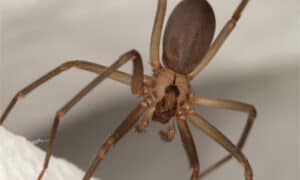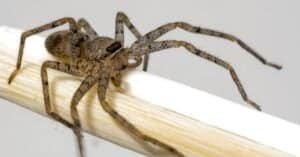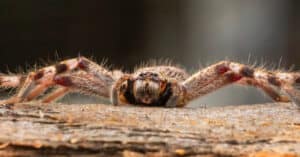Cambodia is a beautiful and exotic place filled with unique creatures and amazing landscapes. While you are enjoying the magic of the country, rest assured that these spiders do not want anything to do with you or any other human if they can help it. Knowing that should calm your nerves. Even if you have arachnophobia, you will be fine, and the likelihood of you seeing one of the “scary spiders” of Cambodia is very unlikely unless it’s at a market boasting “fried tarantulas” or a-ping. Know that if you do happen to stumble upon one of these exotic arachnids, they will do whatever they can to escape you by running away, playing dead, or attempting to hide.
In Cambodia, fried tarantulas are considered a delicacy. These spiders, called “a-ping” or “giant water spider” are actually several species of spiders. One of those is the infamous Thai zebra-legged tarantula, and the others are various other large spiders. Sadly, they are overhunted, and the numbers are now severely depleted because of this. Spiders are an important part of the ecosystem, and they cannot be replaced.
1. Thai Zebra Leg Tarantula (Haplopelma albostriatum)
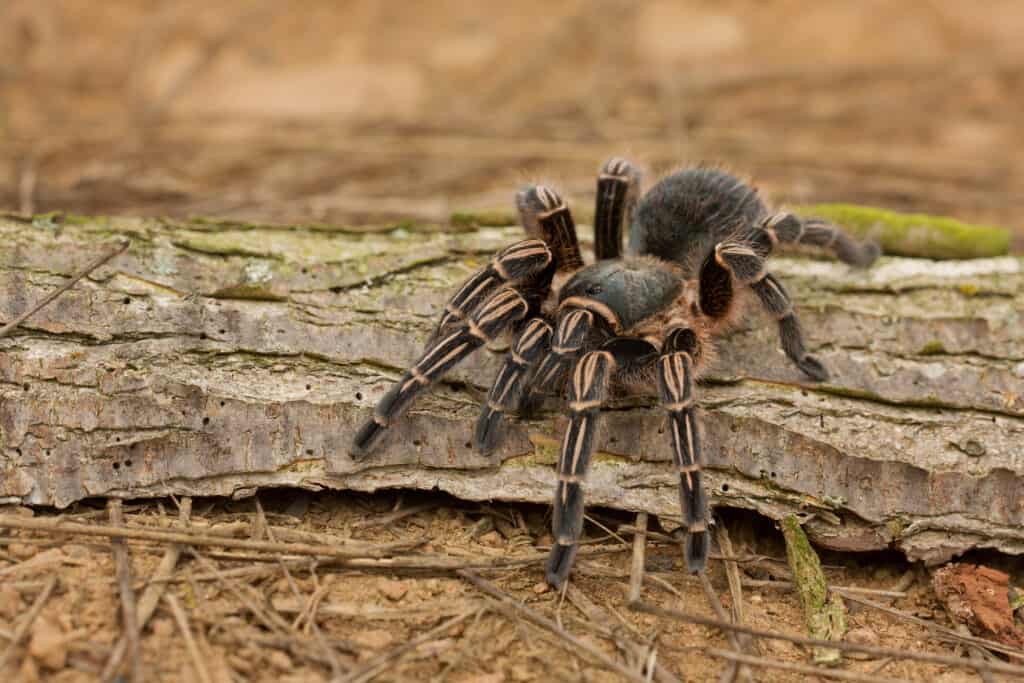
The Thai zebra tarantula is hunted and eaten fried as a delicacy in Cambodia.
©Milan Zygmunt/Shutterstock.com
Appearance: Dark brown/grey/black tarantula with light stripes on its legs
Size: 3 inch body length
Legspan: 5 – 6 inches
Lifespan: Males 3 – 4 years and Females 12 – 15 years
Gestation: 100 – 200 eggs that hatch in 6 – 8 weeks
Danger: Defensive but can become aggressive Old World tarantula that will attack and bite if not able to flee. The bite is not physically harmful to humans but does hurt due to the amount and type of venom in the bite. Old World tarantulas do not kick hairs because they do not have urticating hairs. Their only line of defense is to flee or bite.
Prey: Very rarely birds, lizards, rodents, large insects, and frogs
The Thai zebra leg tarantula is the number one spider Cambodians use for a-ping, which is a delicacy in Cambodia consisting of deep frying these spiders and eating them whole. Most people only eat the legs, though. Due to the severe hunting of these spiders, their numbers have dwindled down. The zebra tarantula is very timid and prefers to stay in its den, a hole it digs, for most of its life. These super-fast tarantulas even drag their prey into their den.
2. Goliath Bird Eating Tarantula (Theraphosa blondi)
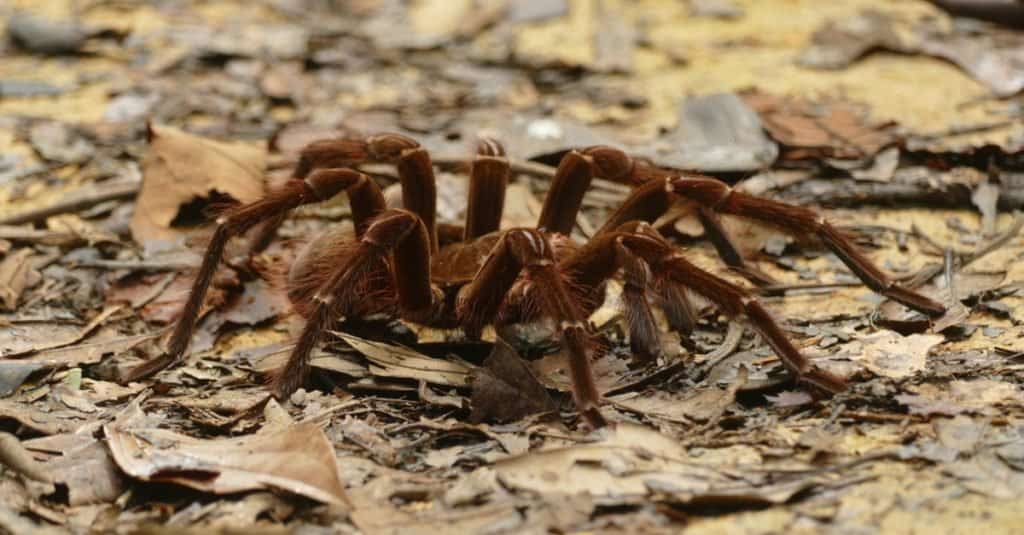
The Goliath birdeater is the world’s largest spider by weight.
©juerginho/Shutterstock.com
Appearance: Golden or light brown tarantula with light markings on its legs
Size: 5 inch body length / 6.2 ounce weight
Legspan: 12 inches
Lifespan: Matures in 3 – 6 years and lives 15 – 25 years
Gestation: 100 – 200 eggs that hatch in 6 – 8 weeks
Danger: Kick hairs called urticating hairs that can be highly irritating to human skin and can cause eye irritation, blindness, or breathing issues in the sensitive
Delicacy: Yes
Prey: Very rarely do they catch hummingbirds. They generally eat lizards, rodents, large insects, and frogs
These massive spiders are native to the area around the Mekong River in Cambodia. They are also sadly hunted to be drowned and then deep-fried to sell as a delicacy. These massive spiders are the largest arachnids in the world and very rarely actually catch birds, as their name otherwise reflects.
3. Pantropical Huntsman Spider (Heteropoda venatoria)
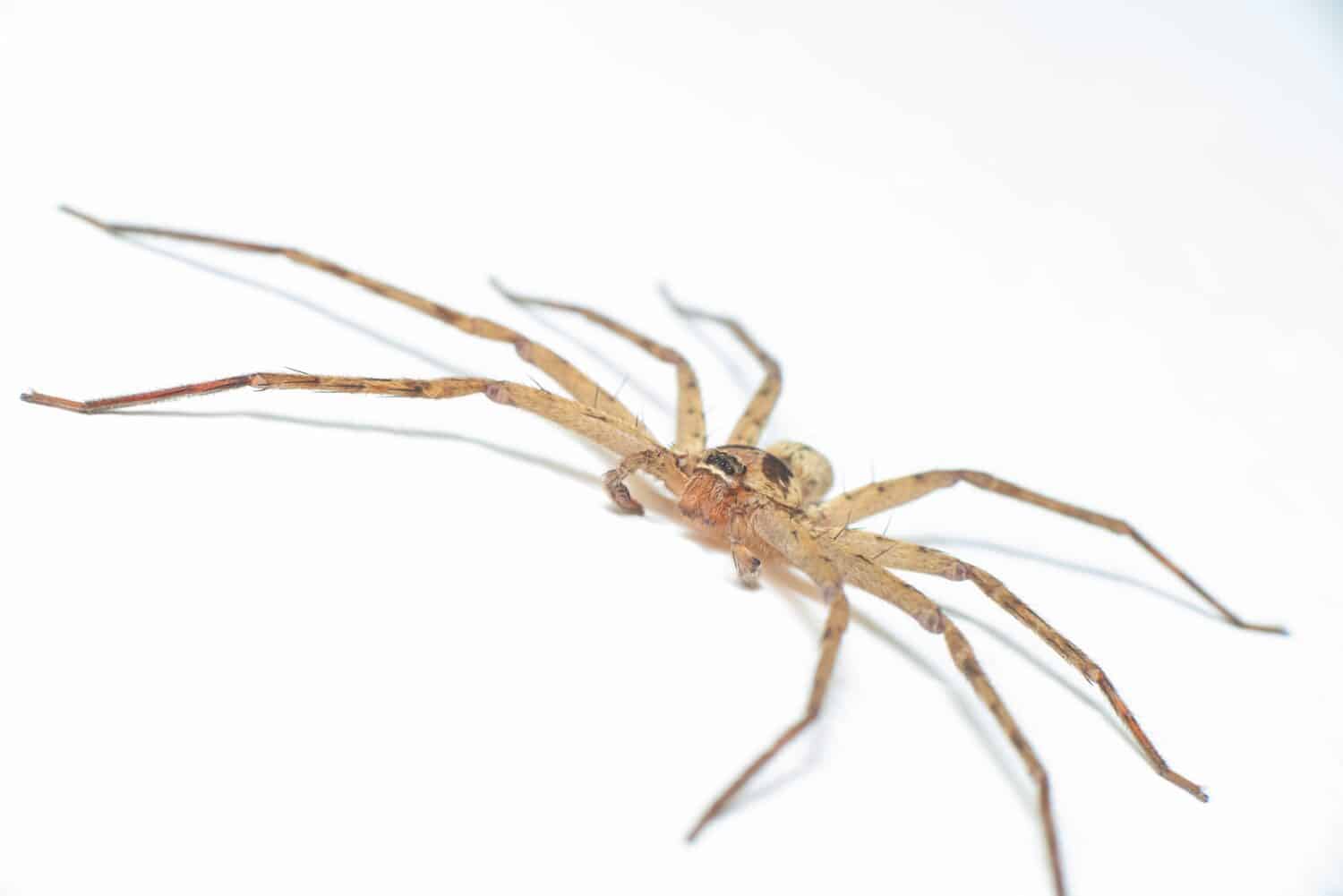
The pantropical huntsman spider is also known as a
crab spider
.
©Muhammad Naaim/Shutterstock.com
Appearance: Golden or light brown flattened spider with light markings on its legs
Size: 1 inch body length, with males being smaller with a larger leg span
Legspan: 5 inches
Lifespan: Lives 1 – 2 years
Gestation: 100 – 300 eggs that hatch in 3 – 4 weeks
Danger: Not at all, though their bite can be painful and lead to some site swelling
Delicacy: Yes
Prey: Cockroaches, lizards, rodents, large insects and frogs
These medium-large-sized spiders, sometimes called banana spiders or giant crab spiders, are caught and released in areas to cut down on cockroaches. The pantropical huntsman spiders are nocturnal and hunt by stalking their prey. They prefer warmer areas to nest, like barns and sheds in areas that get cold. They are actually considered “house spiders” in tropical Asia. These spiders are excellent housemates that rid your home of pests.
4. Vietnamese Earth Tiger Tarantula (Cyriopagopus longipes)
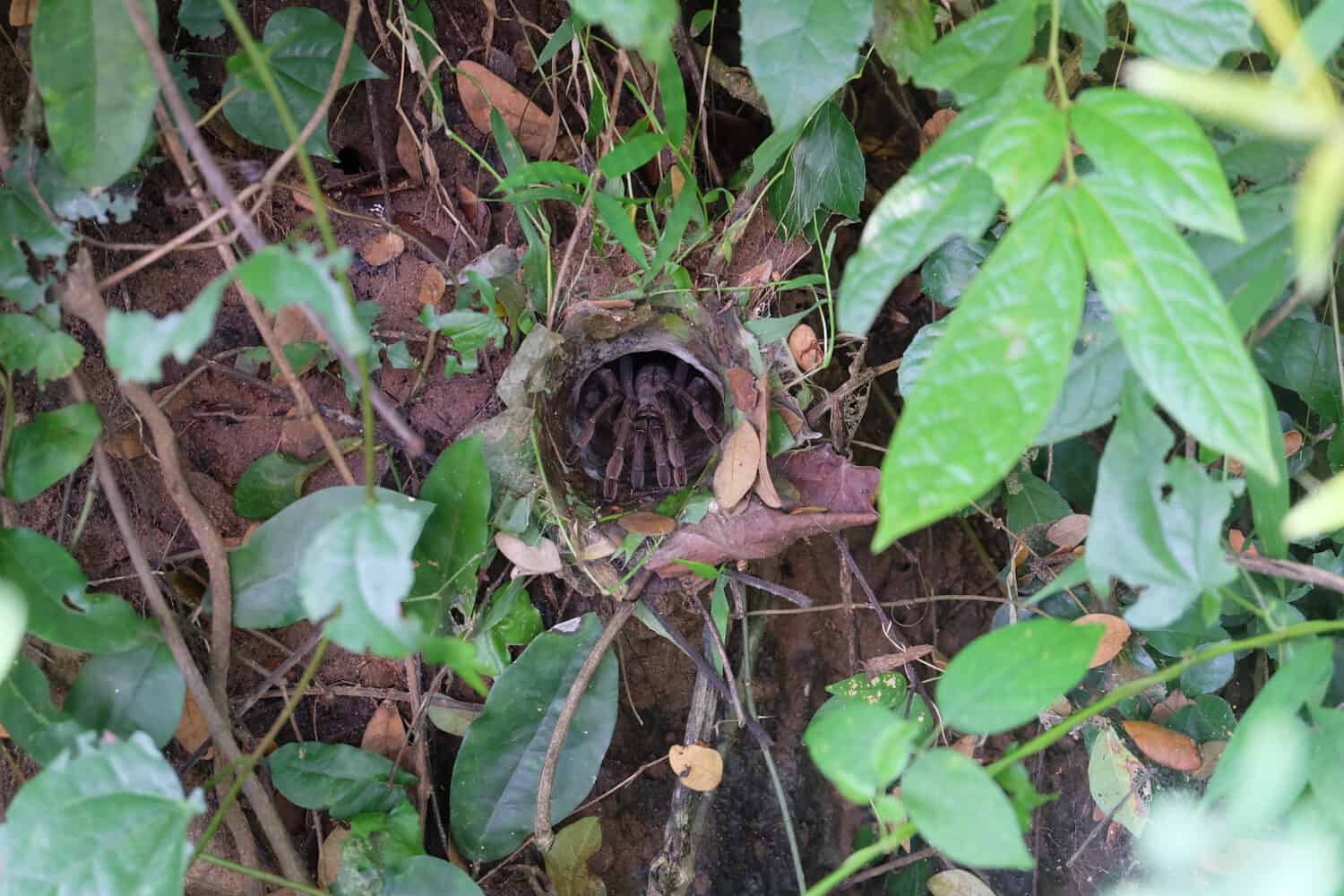
The earth
tiger
tarantula prefers to remain in its burrow for most of its life.
©Anuwat Sonserm/Shutterstock.com
Appearance: Dark greyish black tarantula with subtle hues of grey, blue, or black over its body and light striped markings on its legs and abdomen. Males are generally brown-colored and smaller.
Size: 2 inch body length
Legspan: 7 inches
Lifespan: Matures in 6 years and lives 15 – 25 years
Gestation: 100 – 200 eggs that hatch in 6 – 8 weeks
Danger: Defensive but can become aggressive Old World tarantula that will attack and bite if not able to flee. The bite is not physically harmful to humans but does hurt due to the amount and type of venom in the bite. Old World tarantulas do not kick hairs because they do not have urticating hairs. Their only line of defense is to flee or bite.
Delicacy: Yes
Prey: Lizards, rodents, large insects, and frogs
The Vietnamese earth tiger tarantula is a fast spider that clearly just wants to be left alone. These spiders are known for frequently threat posing when they feel the slightest bit threatened. They also deep deep burrows that they rarely leave in the rainforest or tropical areas. These spiders hunt at night and drag their prey back to their nest. They also make a funnel-webbed entrance into their den. Some of these spiders have beautiful coloring and are sought after as pets in the tarantula trade.
5. Thailand Black Tarantula (Cyriopagopus minax)
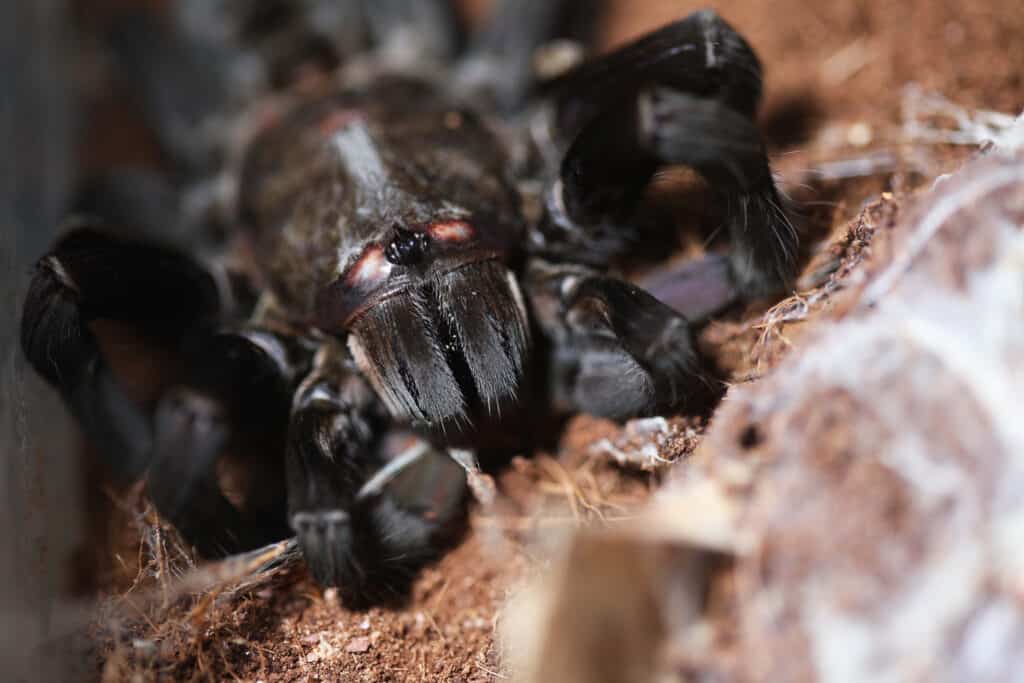
Thailand black tarantulas (
Cyriopagopus minax) are one of the more aggressive species of old world tarantula.
©Pavaphon Supanantananont/Shutterstock.com
Appearance: Jet black tarantula
Size: 1 inch body length
Legspan: 5 inches
Lifespan: Males live 2 – 4 years, and females live 11 – 13 years
Gestation: 100 – 200 eggs that hatch in 6 – 8 weeks
Danger: Defensive but can become very aggressive. Old World tarantula that will attack and bite if not able to flee. The bite is not physically harmful to humans but does hurt due to the amount and type of venom in the bite. Old World tarantulas do not kick hairs because they do not have urticating hairs. Their only line of defense is to flee or bite.
Delicacy: Yes
Prey: Insects, beetles, amphibians, and rodents
Another Old World tarantula, the Thai black tarantula, is harmless until threatened. These spiders are quick to threat pose as a warning to leave them alone. They will bite and are very fast, so use caution. The black tarantulas are very timid and spend most of their lives in their nests underground. They, like the earth tiger and zebra-legged tarantula, drag their prey into their den.
6. Giant Huntsman Spider (Heteropoda maxima)
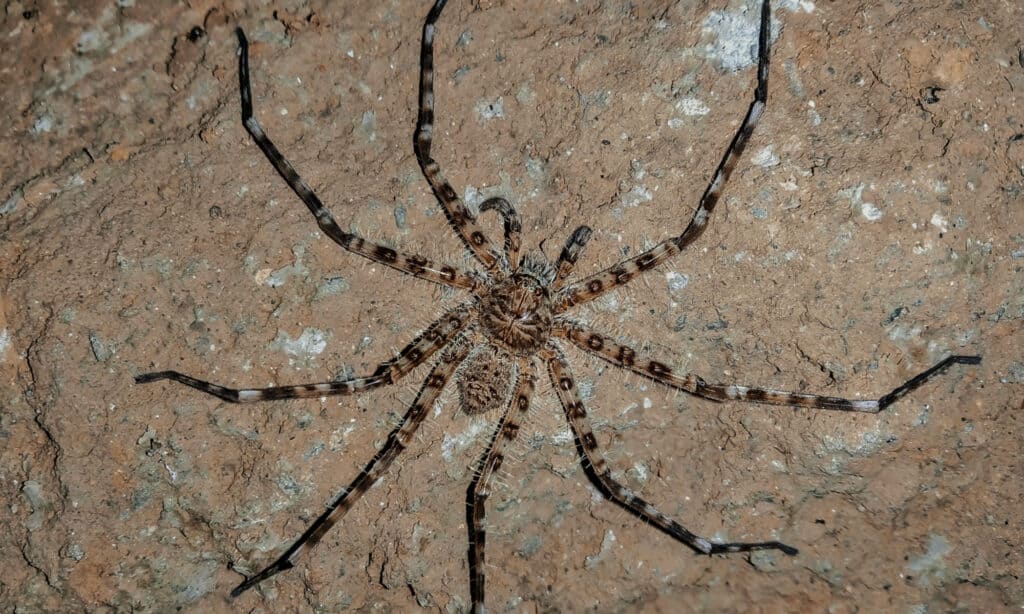
Mother giant huntsman spiders chew a hole in the silk egg sac so that the spiderlings can come out after hatching and then developing for several weeks.
©Nikhil Guhagarkar/Shutterstock.com
Appearance: Tan or light brown spider with dark-colored markings on its legs
Size: 3 inch body length
Legspan: 12 inches
Lifespan: Lives up to 2 years
Gestation: 100 – 200 eggs that hatch in 3 weeks
Danger: Not dangerous. However, the bite can be painful and cause slight swelling. Allergic reactions have happened.
Delicacy: No
Prey: Very rarely birds, lizards, rodents, large insects, and frogs
The giant huntsman spider is a runner, not a fighter, and these big spiders can run fast. They do tend to get confused when they are frantically fleeing, and people often report them running toward them as if to attack. They are simply confused. Being a super-fast spider comes in handy when they are stalking and hunting prey. They do not build webs to catch prey and do not burrow into the ground. These large spiders can generally be seen inside curled-up leaves on plants and in trees. They do like to come indoors where it is warmer and dryer but are harmless.
7. Lawn Wolf Spider (Hippasa holmerae)
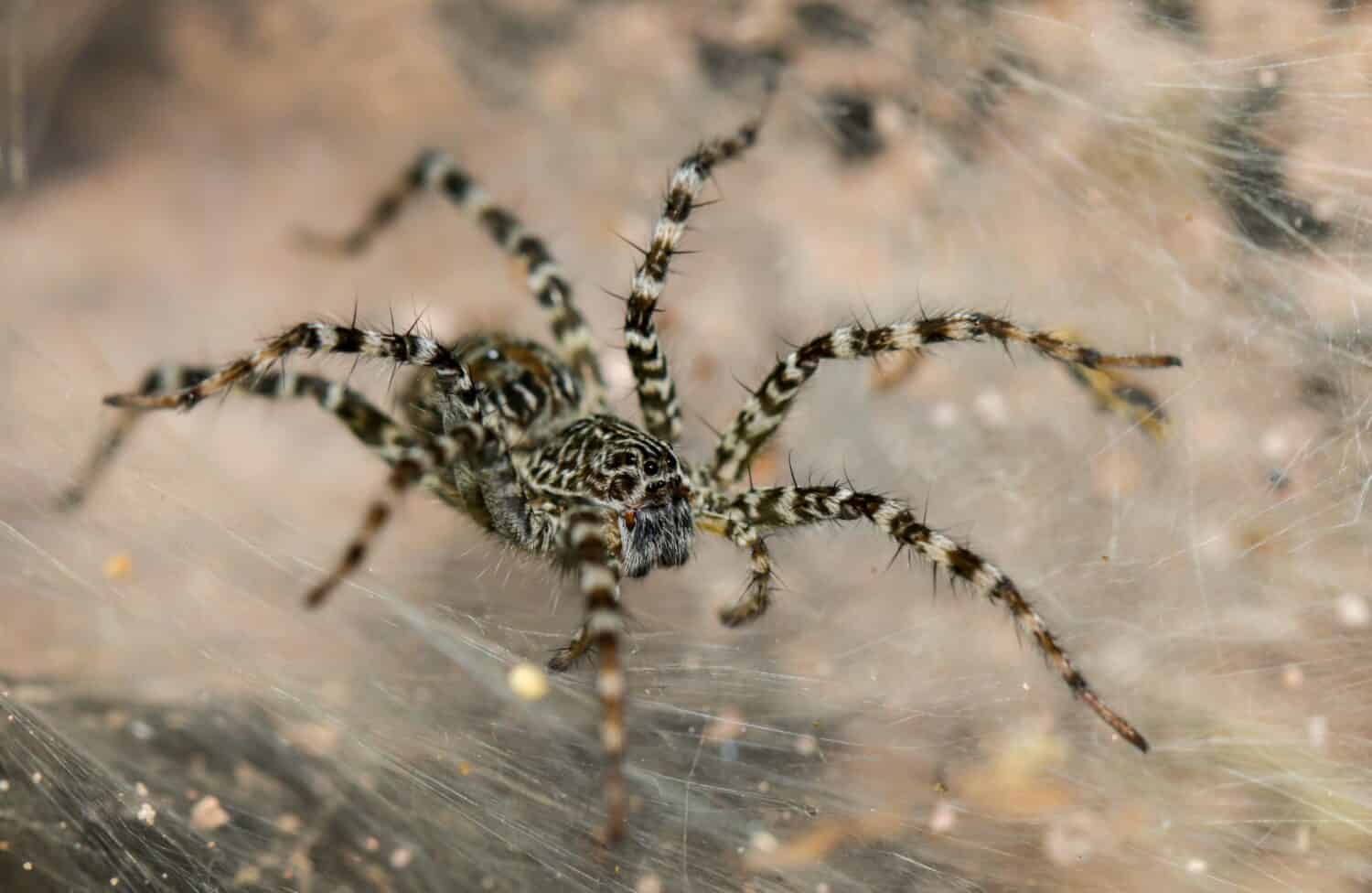
The lawn
wolf spider
is excellent at pest control and hunts other spiders after dark.
©TosDy Prince Shutter/Shutterstock.com
Appearance: Pretty tan/white and brown tiger-striped legs with a tan/white and brown ornately decorated body camouflaged to fit in with brush and grass
Size: 1 inch body length
Legspan: 6 inches
Lifespan: Lives 2 – 2 1/2 years
Gestation: 100 – 200 eggs that hatch in 2 – 3 weeks. Once they are grown enough to leave the silk sac they ride on their mom’s back for another month+
Danger: None
Delicacy: No
Prey: Other spiders, crickets, small lizards, a variety of insects, and sometimes tiny frogs
These wolf spiders are pretty and do a great job of killing other spiders and pests that they find by stalking and hunting in the grass during the night. They make funnel-shaped webs that they sleep in during the daytime. The lawn wolf spider, like other wolf spiders, are fantastic mothers and are very protective of their spiderlings. Even before they have hatched, the mother will carry the egg sac everywhere with her. Once they do hatch, they all hop onto her back, where they will stay until they molt into larger spiders more capable of protecting themselves.
8. Heavy-bodied Jumping Spider (Hyllus semicupreus)
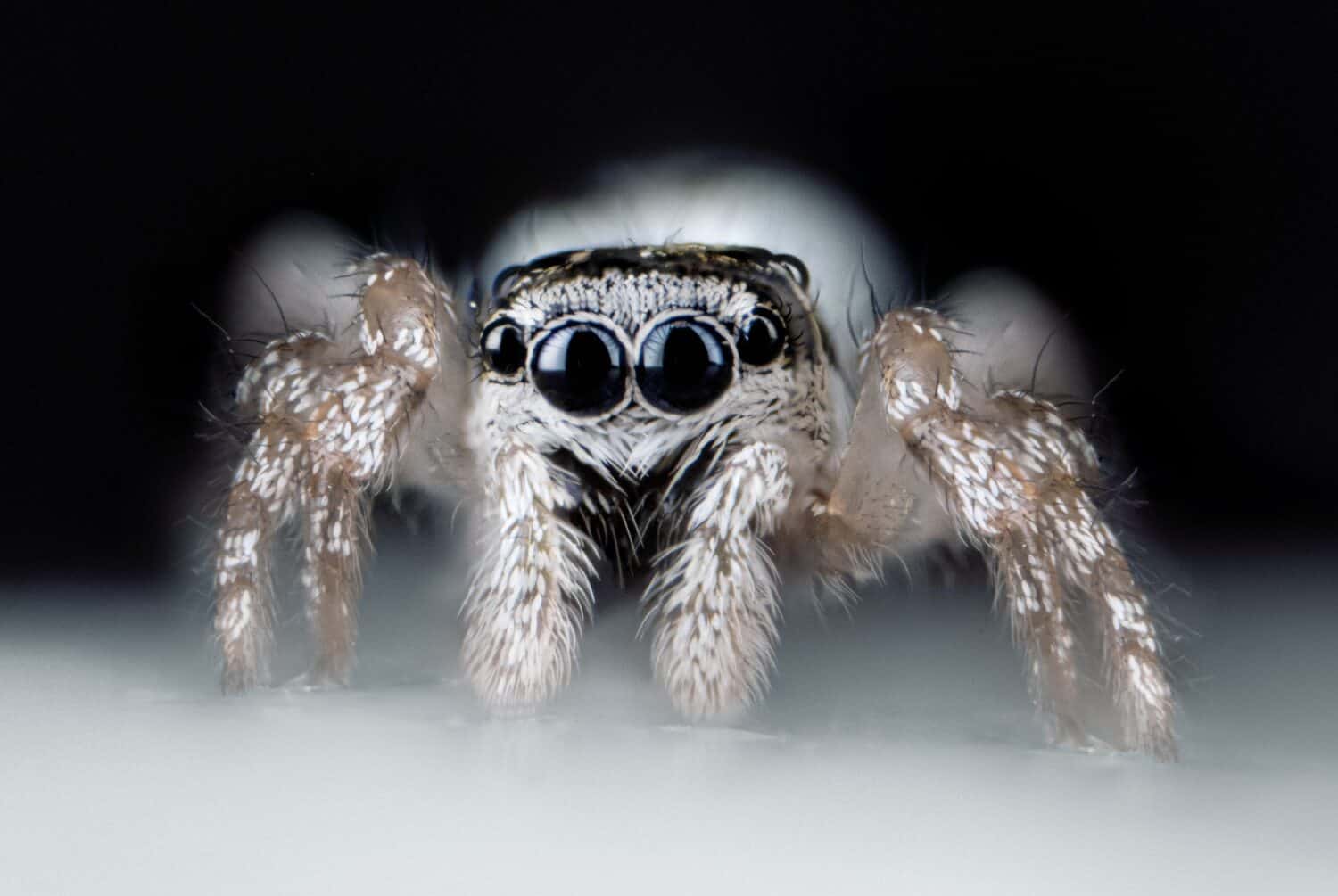
The Hyllus family of jumping spiders requires a humid tropical environment and also tends to be cute.
©Dmytro Khlystun/Shutterstock.com
Appearance: Small, fuzzy, and white with large forward-facing eyes with black “eyelashes” on the sides
Size: 1/2 inch body length
Legspan: 1 inch
Lifespan: 1 – 2 years
Gestation: 100 – 200 eggs that hatch in 4 weeks
Danger: None
Delicacy: No
Prey: Crickets, flies, and small insects
The small heavy-bodied jumping spider spends much of its time grooming itself and remaining in its hammock or nest. Jumping spiders make small hammock-styled nests on which they sleep. They are much like sleeping bags for spiders. These big-eyed spiders can jump several inches to catch prey, even in flight! Jumping spiders are becoming beloved pets for people all over the world.
9. Giant Golden Orb Weaver (Nephila pilipes)
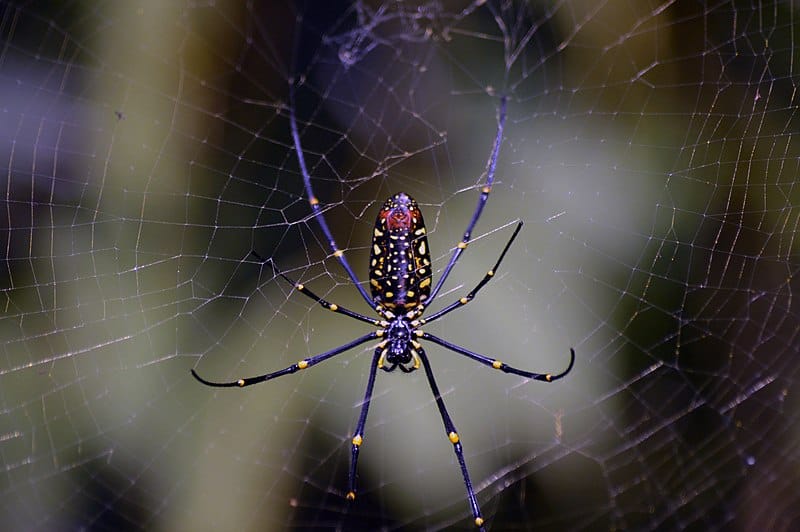
The giant golden
orb weaver
is sometimes mistaken for the joro spider, who is also an orb weaver of similar shape and size.
Appearance: Greyish green upper that is long and thin, a skull-like face, very long delicate legs, and bright yellow and black underside. Their pedipalps are orange or red.
Size: 2 inch body length
Legspan: 6 inches
Lifespan:1 – 1 1/2 years
Gestation: 100 – 400 eggs that hatch in 4 weeks
Danger: They only bite if threatened. The bite can be painful, and some people experience joint and muscle pain with chills.
Delicacy: Yes
Prey: Insects that it wraps in silk to consume later
These enormous, timid spiders make odd-shaped verticle webs in between trees and bushes to catch flying insects. They have unique coloring and are sometimes confused with the joro spider in Australia. When the giant orb weaver’s spiderlings leave the nest, they use the ballooning technique to relocate on the wind.
10. Pantropical Jumping Spider (Plexippus paykulli)
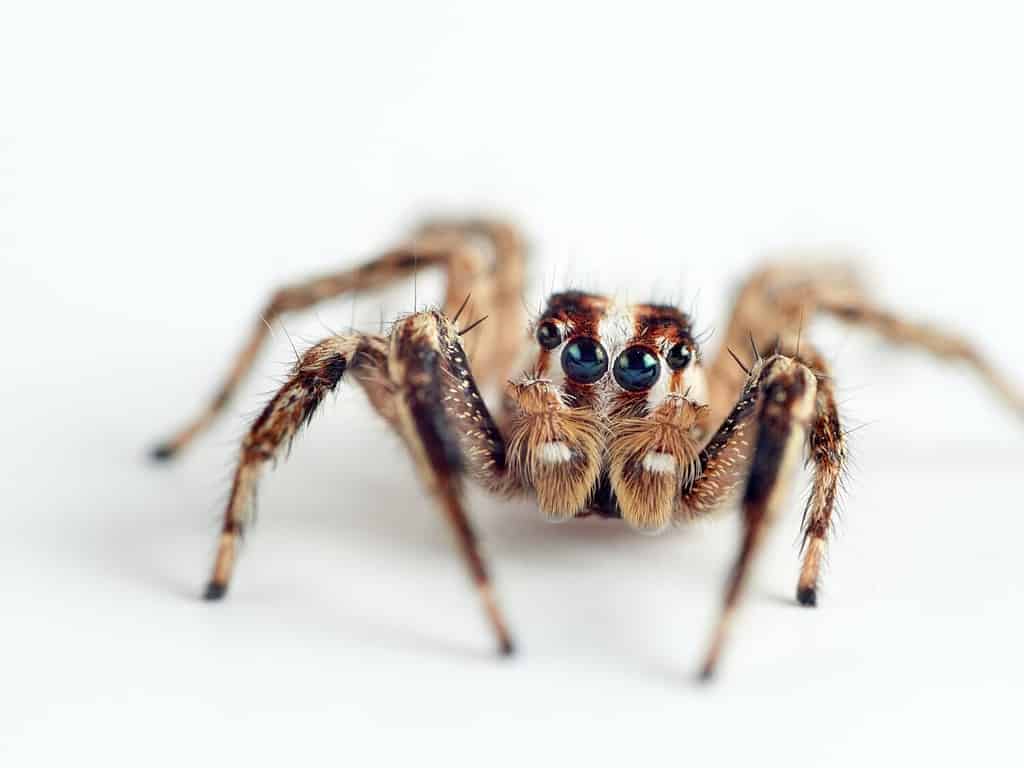
These tiny pantropical jumping spider males perform the dance of a lifetime to court their mate.
©Macronatura.es/Shutterstock.com
Appearance: Small adorable tan, brown and white. Males have bolder coloring with a white stripe down their back and on their pedipalps
Size:1/4 inch body length
Legspan: 1/2 inch
Lifespan: 1 – 2 years
Gestation: 100 – 200 eggs that hatch in 6 – 8 weeks
Danger: None
Delicacy: No
Prey: Gnats, mosquitos, small crickets, and other small insects
Like other jumping spiders, the pantropical jumping spider is tiny, very fuzzy, and seems like it has spring-loaded legs. These small spiders hunt in trees and on plants for small insects that it catches by jumping on them. They do not use a web to catch prey but instead use it to make small hammocks where they sleep at night. These spiders enjoy the sunlight and stay in their hammocks on rainy or dark days.
How to Safely Relocate a Spider
When a spider feels that its life is in danger, it will defend itself if it cannot escape. The best thing you can do is try to avoid a situation where you are making a spider feel threatened. They want to live their lives every bit as much as you want to live yours. If you find yourself in a situation where it becomes imperative to relocate the spider, ask for assistance if you are too nervous. An easy way to relocate your unwanted friend is to put a container over it and slid a piece of cardboard or paper carefully under the container, flip it over once you’ve contained the spider and take the entire thing outside and release the spider. Problem solved, for everyone!
The photo featured at the top of this post is © iSKYDANCER/Shutterstock.com
Thank you for reading! Have some feedback for us? Contact the AZ Animals editorial team.




